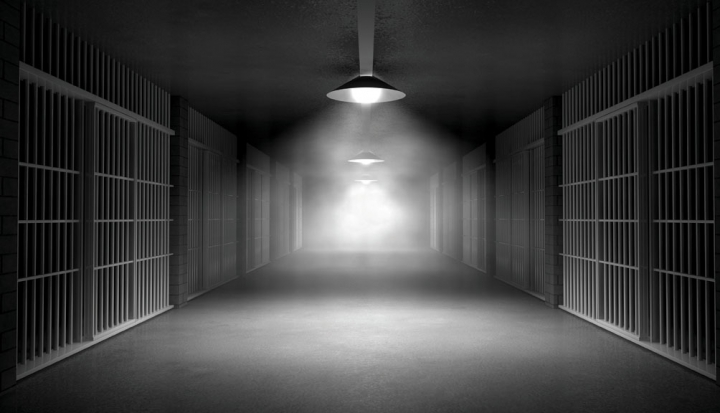The death penalty is still legal in most states, but little by little, the laws that allow executions are being chipped away.
Leroy Wright was forced to endure a mock execution mere hours before doctors were set to inject him with a lethal cocktail meant to end his life in January 2011. He lay on the gurney with IVs in his arms when the United States Supreme Court issued a temporary stay of execution.
Wright was convicted of murdering his wife in 1988, but the victim’s family—including Wright’s three children—had requested a sentence of life in prison without parole. The prosecutor had offered him a plea of life without parole, but his volunteer attorney erroneously advised against it. In a 9 to 3 vote, the jury decided prison without the chance of parole was the appropriate punishment for Wright’s crime. However, thanks to an Alabama law that allows for judicial override, the trial judge, without giving a reason as to why he was rejecting the jury’s decision, sent Wright to death row.
Unaware that his attorney had abandoned him in federal court and failed to file an appeal to the court’s decision against him, Wright learned of his execution date, that he no longer had representation, and that his case was no longer in court via a letter sent to him in prison. And once a case is out of court, it can’t get back in. He had thought it was simply pending.
So Wright contacted the Equal Justice Initiative (EJI), an organization that provides legal assistance to defendants who do not otherwise have access to a lawyer and have been denied fair treatment by the justice system in Alabama. Charlotte Morrisson, an attorney with EJI, says Wright’s situation was the result of the confluence of state laws that render the death penalty system in Alabama broken.
“Almost every single decision maker in this process—the victim’s family, the jury, the prosecutor—was asking for mercy in this case,” she says. Yet still the judge ordered the death penalty.
“This is particularly problematic in a state that has elected judges,” Morrisson says. “Every six years, we see judges campaigning all the time on how they’re tough on crime, how they impose the death sentence. They’re not afraid to override juries.” According to Morrisson, more than 20 percent of Alabama’s death row had been given sentences of life in prison by a jury.
Likewise, Alabama has no public defender system and caps out-of-court attorney compensation at $1,500 for individuals involved in capital murder cases. (Until 2001, it was $1,000.) “In those cases, there’s a real question of whether any attorney could have provided adequate assistance, particularly when these are private attorneys, solo practitioners, and they’re not working for the public defender’s office, and they’re being paid $1,000 to do a case,” Morrisson explains. More than 50 percent of individuals now on death row in Alabama relied on an attorney who was paid only $1,000 to defend them.
Three hours after Wright’s mock execution, the Supreme Court’s stay was lifted and he received an injection that ended his life. Today, understanding and publicizing all the errors in cases such as Wright’s is a large part of the work being done to repeal capital punishment in the United States.
Despite the many flaws with the death penalty system, it is legal in most states. Public support is decreasing and the last decade has seen a flurry of states overturn their death sentencing laws, but anti-death penalty advocates say there’s much more work to be done.
State by state
Per capita, Alabama has the largest death sentencing rate, as well as the largest number of death row inmates. Until 1989 executions in the state accounted for 20 percent of the nation’s total. But while the death penalty is experiencing a decline nationwide—with six states (New Jersey, New York, New Mexico, Illinois, Connecticut, and most recently, Maryland) repealing laws since 2007—it is unlikely Alabama will see its own laws repealed anytime soon.
Karen Clifton, executive director of the Catholic Mobilizing Network to End the Use of the Death Penalty (CMN), says working against the death penalty isn’t just about repeal, though. “This is a state-by-state issue. We work with [organizations], find out what the key messaging is for that state, and tailor our message toward that,” she says.
Each state’s justice system is unique, requiring a custom-made approach toward the long-term goal of a nationwide ban of the death penalty. In places like Alabama, the work has to be about making it more difficult to hand down a death sentence, such as by repealing judicial overrides or simply tightening restrictions on judges who use them. “It’s crazy to go in and just say you want repeal. It’s not going to happen,” Clifton says of high-use states, which also include Texas and Virginia, where 515 and 110 executions have taken place, respectively, since 1976, according to the Death Penalty Information Center (DPIC).
Her network, which works with state Catholic conferences and the United States Conference of Catholic Bishops, is, for example, interested in educating potential jurors in these states, reminding even Catholics that they can in fact consider whether or not to apply the death penalty when sitting on a jury in a capital murder trial.
“A lot of people come up to me and say, ‘I cannot do this (serve jury duty) because I’m totally against the death penalty,’ ” she says. “Well, then the person on trial isn’t getting a pure sample, a fair jury. It’s just a jury that’s pro-death penalty when they walk in the door.”
In Maryland, repeal was a real possibility. Mary Ellen Russell, executive director of the Maryland Catholic Conference, says that Citizens Against State Executions (CASE), the anti-death penalty coalition working with the conference, was successful in part because of Maryland’s de facto moratorium on state executions. And that was thanks to a court order against the use of lethal injection, as the court considered it to constitute cruel and unusual punishment. Only five executions had taken place in Maryland since 1976, with just five people on death row. Compare that to Alabama, where more than 10 times the number of executions (56) have occurred since the same year and death row is currently at 197, nearly 40 times that of Maryland.
Matthew Cherry, executive director of Death Penalty Focus, an anti-death penalty organization, says that staying focused on state laws isn’t so much an alternative to pushing for a federal ban, but rather a strategy for eventual abolition nationwide. “Not only will we make progress this way, [but] the more we do that, the more weight we have of the argument at the federal level,” says Cherry. It’s something akin to chopping down a large tree one swing of the ax at a time, until the whole thing comes crashing down.
Despite the fact that there are 733 people on death row in California, with only 13 executions in the past 40 years, repeal seemed a possibility in 2012. The exceptionally high costs of maintaining death row and properly getting a case through the appeals process—added to a state budget crisis—only increased optimism that the time to change the state law was at hand.
Ned Dolejsi, executive director of the California Catholic Conference, says that a diverse collection of organizations that included Catholic groups, Death Penalty Focus, the American Civil Liberties Union, and the American Friends Service Committee joined forces to attempt to end the use of the death penalty. They worked together for several years leading up to the 2012 election, when a referendum for repeal, Proposition 34, appeared on the ballot. The initiative was narrowly defeated. Dolejsi says that, as with most political campaigns, it came down to money. “California is a challenge in that we’re so large,” he says.
Messaging matters
Messaging was strong in California during the Prop 34 campaign. But, with an issue as multifaceted as the death penalty, it had to take multiple paths. The messaging really depends on your audience, says Cherry. “You really have to know who you’re talking to and what their concerns are when you choose the message that you give. What we find is that different people have different entry points into the issue.”
Money talks, and it was a key argument for a statewide ban in California. Between 1948 and 2011 California spent more than $4 billion on appeals, trials, and incarceration, according to a report published in the Loyola Law Review. Prisons are overcrowded, and death row has run out of space. Plans in the works to build a new facility to house the overflow of men at San Quentin, California’s most notorious prison, would have cost the state hundreds of millions. Gov. Jerry Brown cancelled those plans in 2011. “It would be unconscionable to earmark $356 million for a new and improved death row while making severe cuts to education and programs that serve the most vulnerable among us,” Brown said, according to CNN.
“It’s more than just money,” says Jeanne Woodford, former executive director of Death Penalty Focus and former warden of San Quentin. “It’s knowing that money, better utilized, can be used for doing things to actually help public safety.” That includes developing a stronger police force and increasing the effectiveness of crime labs, “because the best way to prevent crime is to solve it. When they understand it in the context about how public safety could be improved by using those dollars, that’s what convinces people.”
Woodford adds that many are compelled to rethink the death penalty when they learn how many people have been exonerated: For every 10 people who have been executed, one has been exonerated and freed. It’s a troubling statistic, many anti-death penalty advocates are quick to point out, that wouldn’t go over well in any other area of public life. Clifton asks, “Would you fly if you knew 10 percent of planes crashed?”
The risk of sentencing an innocent person to death, coupled with the option to put an offender in prison for life without the chance for parole, makes for a compelling case against using the death penalty. So compelling, in fact, that juries presented with the latter sentencing option tend to choose it, says Richard Dieter, executive director of the Death Penalty Information Center. Life without parole sentences became more popular in the 1990s after DNA evidence became a major part of forensic science. Until then, the death penalty had been on the rise. “There’s just a broad knowledge in the American public now about the risk of mistakes,” says Dieter.
It’s not just a matter of what the messaging is, though. From whom it comes can also make a difference. Mary Ellen Russell of the Maryland Catholic Conference says that the awareness of mistakes was crucial to CASE’s success, but so were the voices of the families of victims. “These two arguments are among the most compelling, particularly because of personal witness of members of the coalition,” she says.
Executing violent criminals is often considered to provide justice for victims and their families, but voices such as Vicki Schieber’s tell another story. Schieber’s daughter was raped and murdered in 1998, but thanks to their Catholic upbringing, Schieber and her husband could not see justice in the death penalty.
“My husband and I realized that seeking vengeance would not, as we were told, bring closure,” she writes in Where Justice and Mercy Meet (Liturgical Press). “Victims’ families who pursue the death sentence suffer from high rates of divorce, unemployment, and poor health, and most never gain the promised closure of the execution itself.” The Schiebers sought that closure, instead, in their work against capital punishment and are joined by an entire victims’ movement.
Clifton says with Schieber’s help, CMN began integrating the idea of restorative justice into their messaging. “The retributive model of justice, which sees an eye-for-an-eye style of sentencing, doesn’t work for society, and it especially doesn’t help victims,” she says.
Having law enforcement officials and exonerees speak publicly about their experiences with the death penalty can also be convincing messaging. Having a face to put on stories of injustice goes a long way in local campaigns. Without these voices, executions and time served on death row happen entirely behind closed doors. “There’s a reason it’s behind doors,” says Clifton. “So many people are traumatized by witnessing [an execution].”
Looking to the future
It’s changing the general public’s opinion of state executions that has the most lasting impact, says Cherry. “It may take longer, but I think it leads to a more genuine understanding of the issues by the public,” he says. “If you just focus on the legal issues without changing public opinion, it’s going to be a never-ending battle because new cases or new laws will come up in different areas and you’ll be constantly fighting them.”
Death Penalty Focus is starting young. This year, they’re working with Catholic high schools in California to introduce an anti-death penalty curriculum. It’s a strategy the Catholic Mobilizing Network is also employing. Clifton says that, as a Catholic organization, there’s a real interest in forming the conscience of Catholics on this issue, starting with teens and tweens. “We’re trying to make a cultural shift, moving away from solving problems with violence,” she says.
CMN also has developed programming for Spanish-speakers, including a focus on how the death penalty is a pro-life issue. Clifton says her organization attempts to show how the death penalty and abortion are part and parcel of the same issue. “If you look at the seamless garment metaphor at both ends—when we close the loophole on the death penalty, we close it on all life issues,” she says.
“When we sign the death warrant and say, ‘Yes, kill this person,’ we’re making their entire life about this one thing they did. And we believe in the possibility for redemption and that there’s more to a human being than one horrible act.”
Creating a cultural shift is going to take some work. A recent Gallup poll shows that a majority of Americans—60 percent—still support the death penalty. But that’s the lowest level of support recorded in 40 years. (Gallup reports that support peaked in 1994 at 80 percent.) According to the Pew Research Center, in just the last two years those who say they’re strongly in favor of capital punishment have dropped from 28 to 18 percent. Among white Catholics, those numbers are similar. Pew reported at the end of March that 59 percent favor the death penalty, while 37 percent of Hispanic Catholics say they’re in favor. Pew also reported that 55 percent of the general population say they support it.
However, according to DPIC, when asked to select from a range of punishments for murder, only 24 percent of Catholics (compared to 33 percent of the general population) pick the death penalty. Fifty-eight percent of respondents selected some form of life without parole.
Dieter accounts for the still-widespread support by noting that the question asked by Gallup is still a theoretical one. It doesn’t take into account all of the associated injustices with the system—not to mention the exorbitant expenses—but simply asks if a death sentence is an appropriate punishment for heinous crimes.
“The more pragmatic question to ask is what is affecting juries and legislators and voters, and that is: If you have the choice, which is the proper punishment? Given the problems of the death penalty, the picture is changed,” he says.
That also explains the support among Catholics. Officially the church still supports the death penalty as an option for the punishment of heinous crimes, but the catechism clarifies that “such cases are very rare, if not practically nonexistent,” as St. John Paul II wrote in his 1995 encyclical Evangelium Vitae (The Gospel of Life), the same document that pro-life advocates cite frequently. In 1974, the National Council (now U.S. Conference) of Catholic Bishops voted to oppose capital punishment and in 1980 issued a statement saying so. Citing systemic flaws among other things, it does society more harm than good, they wrote.
It’s also hard to deny that something is afoot. The majority of states don’t regularly perform executions, and an increasing number are outright repealing the death penalty. “It’s quite phenomenal,” says Dieter. “It’s something that hadn’t been happening 20 or 30 years before. There weren’t states abandoning the death penalty. It was thought to be an issue you wouldn’t touch politically.” Now it’s quickly becoming a policy left over from another era. “I think it’s not if, it’s when,” says Woodford. “We have 18 states now, and I think the number will continue to grow until we no longer have the death penalty in the United States.”
And then? “I believe that if we can end the death penalty in the United States,” says Cherry, “we’re well within sight of abolishing the death penalty worldwide.”
This article appeared in the July 2014 issue of U.S. Catholic (Vol. 79, No. 7, pages 12-17).
Want to read more? Here’s a timeline of the death penalty in the United States and our interview with anti-death penalty activist Sister Helen Prejean.
Image: ©Shutterstock/albund













Add comment